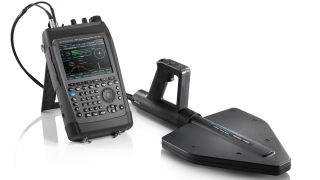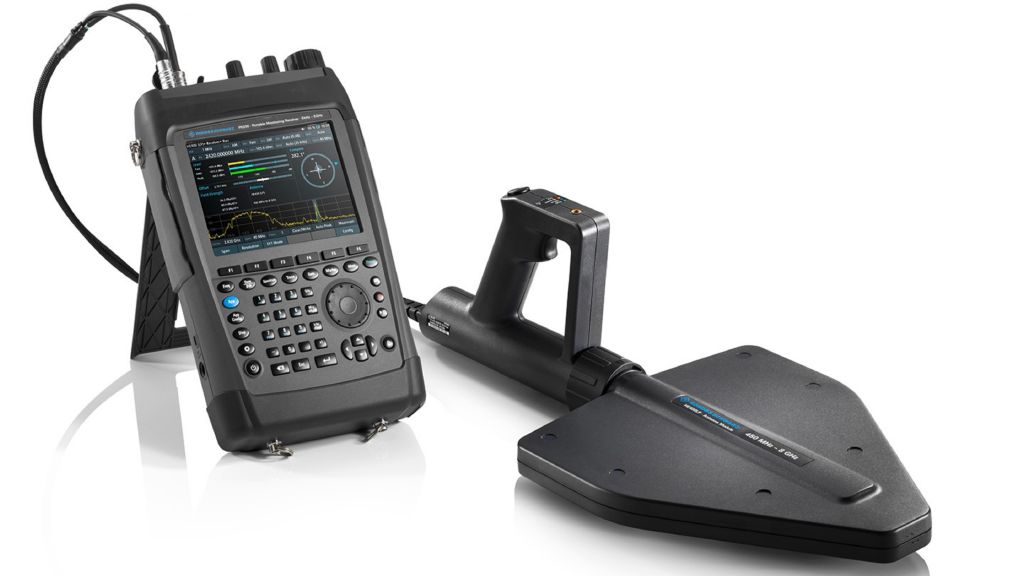Interference hunting in TDD networks - Gated spectrum method
Gated spectrum method with the R&S®PR200

Gated spectrum method with the R&S®PR200
In time division duplex (TDD) networks, the downlink (DL) and uplink (UL) use the same frequency band in different timeslots. When viewing such TDD signals on a conventional spectrum display, it is impossible to differentiate the two signals nor any other unwanted signals present in the same spectrum. This makes interference hunting extremely difficult.
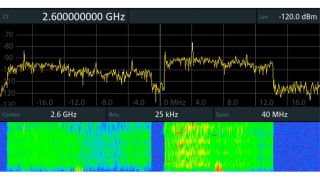
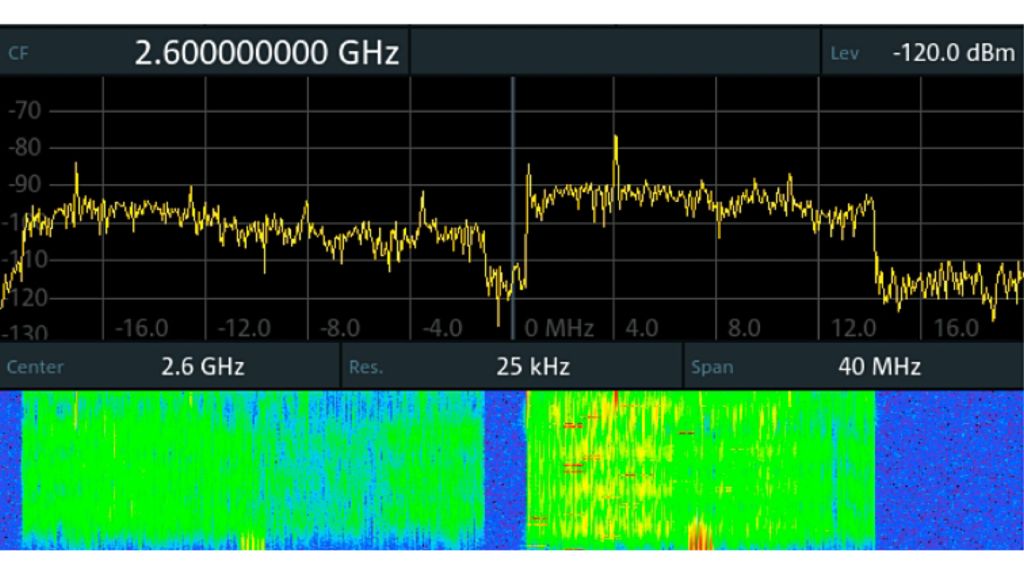
Example: 40 MHz real-time spectrum and waterfall display of two TDD-LTE signals with a persistent interferer at 2602 MHz that can hardly be seen on the display
The R&S®PR200 portable monitoring receiver provides a gated spectrum function that enables users to effectively separate uplink and downlink of the TDD signals on the spectrum display. If the receiver is triggered to display spectrum only during the uplink timeslot, this will provide better visualization of interferers occupying the same frequency as the wanted signal.
Activating gated spectrum on the R&S®PR200
The gated spectrum function requires the R&S®CS-ZS time domain measurement option in the R&S®PR200.
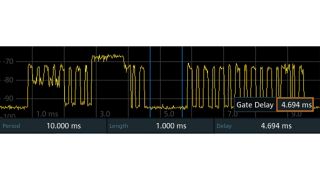
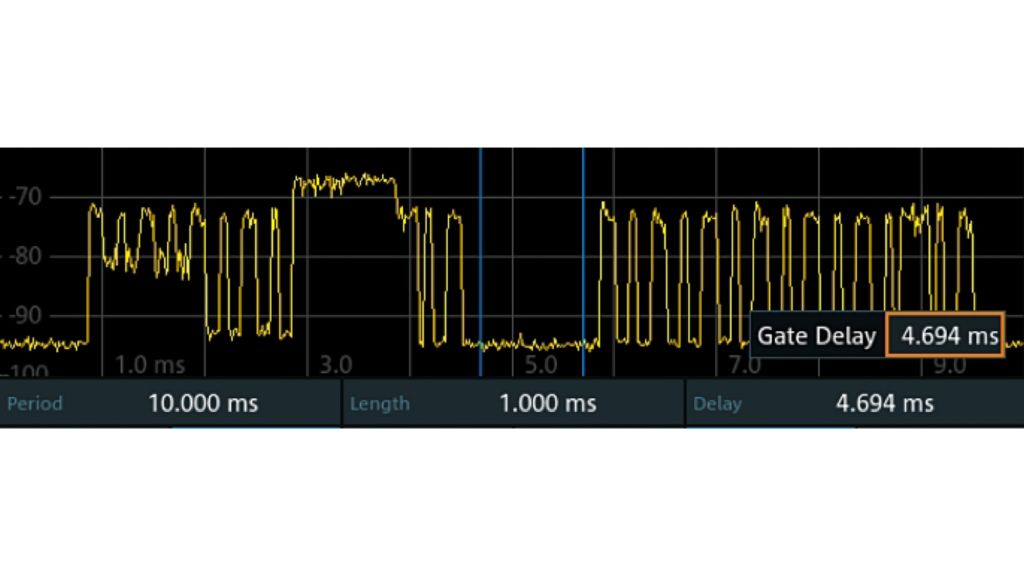
Gated trigger settings for viewing UL spectrum in TDD-LTE
Viewing uplink (UL) spectrum in TDD-LTE
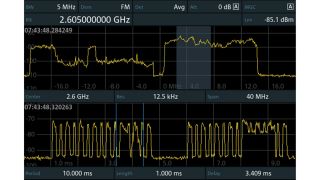

When the gate (two parallel blue lines) is positioned at the downlink slot, the downlink signal spectrum is observed in the top display.

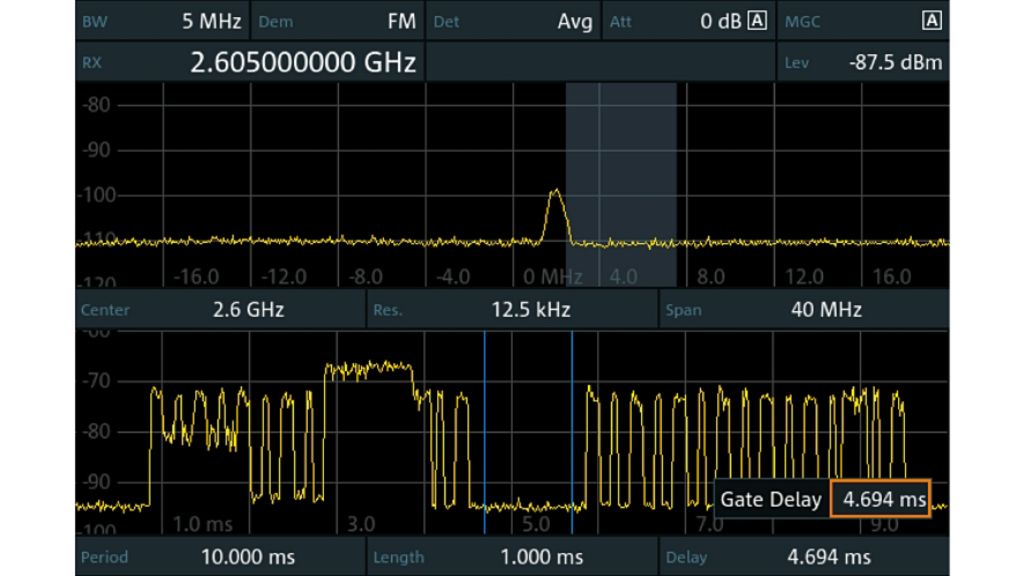
With the gate shifted to the uplink slot, the interferer at 2602 MHz can be observed clearly in the spectrum display (top)


Interference hunting with the R&S®HE400VHF VHF antenna module
Advantages of gated spectrum in the R&S®PR200
